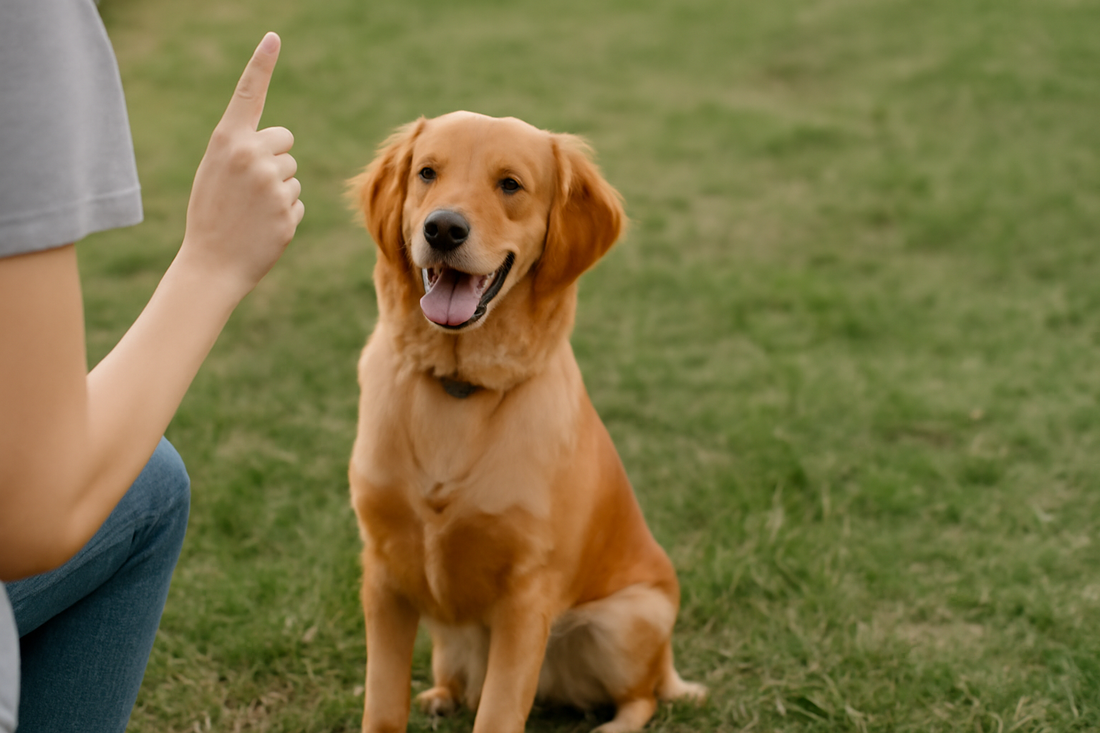
12 Essential Dog Training Tips Every Owner Should Know
Share
Getting a new dog is one of life's greatest joys, but let's be honest: those first few weeks can be absolutely mental. Whether you've just brought home an energetic pup or adopted an older dog who's a bit bold, proper training makes all the difference between a well-behaved companion and a four-legged tornado wreaking havoc in your gaff.
The good news? You don't need to be some class of professional trainer to teach your dog the basics. With a bit of patience, consistency, and the right approach, you can turn even the most stubborn mutt into a grand family member. Here are twelve proven strategies that work a treat for dogs of all ages and breeds.
Start with the Foundation: Basic Commands
1. Master the "Sit" Command First
Every decent training journey starts with teaching your dog to sit. It's the foundation for everything else you'll be at with them. Hold a treat close to your dog's nose, slowly lift it over their head, and say "sit" clearly. Most dogs will naturally lower their bottom to the ground as they follow the treat. The moment they sit, reward them straight away with the treat and loads of praise.
Practice this dog training at home tips technique for just five minutes, a good few times throughout the day. Consistency is key: use the same word every time and reward them the second they get it right.
2. Get the "Stay" and "Come" Commands Sorted
Once your dog has the sitting down to a tee, you can build on this foundation. Start with very short stays (just a few seconds) before releasing them with a cheerful "right so!" Gradually increase the time as they get more reliable.
For recall training, always make coming to you the most brilliant thing your dog can do. Use proper good treats, excited praise, and never call your dog to come for something they'd see as negative.
Dog Training Tips for Beginners
3. Stick with Positive Reinforcement
Forget those old-fashioned methods that rely on being the boss or giving out. Modern dog training tips for beginners focus on rewarding good behaviour rather than punishing mistakes. When your dog does something right, mark it straight away with a "good dog!" or click from a training clicker, then follow up with a treat or praise.
This approach builds confidence and strengthens your bond while making training sessions something your dog actually looks forward to.
4. Keep Training Sessions Short and Sweet
Dogs have fairly short attention spans, especially the young lads. Aim for 5-10 minute sessions, 2-3 times daily. This stops them getting bored or frustrated while ensuring your dog stays engaged and mad keen to learn.
End each session on a high note with a command your dog knows well, so they always finish feeling deadly.
5. Be Sound with House Training
Accidents happen, and sure that's completely normal. Set your dog up for success by taking them outside regularly: first thing in the morning, after their dinner, after naps, and before bed. Always go to the same spot and use the same phrase like "go toilet."
When accidents happen indoors, clean thoroughly with proper enzyme cleaner to get rid of odours that might bring them back to the same spot.

Dog Training Tips for Walking: Enjoying Lovely Strolls
6. Start Leash Training Inside
Before heading out, let your dog get used to wearing a puppy collar and lead inside your house. For larger or stronger dogs, consider using a dog harness instead, as it gives you better control and is easier on their neck. Many dogs don't be having this new sensation at first, so patience is everything. Let them drag the lead around under supervision, then gradually pick up the other end and practice walking together indoors.
7. Teach Proper Lead Manners
The secret to enjoyable walks is teaching your dog that pulling gets them nowhere fast. Whether you're using a dog collar for smaller dogs or a dog harness for better control, the technique remains the same. When your dog pulls ahead, just stop walking altogether. Don't budge until the lead is loose again. This dog training tips for walking technique takes a bit of patience, but it's absolutely brilliant.
Reward your dog with treats and praise when they walk nicely beside you. In Ireland's gorgeous countryside, you'll want to enjoy those scenic walks without being dragged along like a sack of spuds!
8. Sort Out Reactivity Early
If your dog barks, lunges, or gets all wound up when seeing other dogs or people, tackle this behaviour early doors. Keep your distance from whatever sets them off while rewarding calm behaviour. Gradually get closer as your dog learns to stay cool.
Advanced Training Strategies
9. Use a Bit of Sense with the Environment
Set your dog up for success by managing what's around them. If they're destroying shoes, keep shoes out of reach. If they're robbing food off counters, don't leave food where they can get at it. Prevention beats correction every time.
10. Have Consistent Rules
Everyone in your house should follow the same rules. If jumping on furniture isn't on, it should never be on (not even "just this once"). Mixed messages only confuse dogs and slow down progress something fierce.
11. Socialise Gradually and Positively
Proper socialisation means exposing your dog to different people, places, sounds, and experiences in a positive way. Start handy with less overwhelming places and gradually work up to busier situations. Always make sure these experiences are positive to build confidence rather than fear.
12. Work on Impulse Control
Teach your dog to wait for permission before eating, going through doors, or greeting people. This builds self-control and reinforces that you're the one making decisions in your relationship.
Common Training Mistakes That'll Drive You Mad
Don't be repeating commands multiple times before expecting them to listen. If you say "sit" three times before your dog responds, you're actually teaching them they don't need to listen the first time.
Avoid training when you're in bad form or losing patience. Dogs pick up on our moods, and negative energy can set back your progress something dreadful.
Never use punishment-based methods that could damage your relationship or create fear-based behaviours.
Building a Lifelong Bond
Remember that training isn't just about obedience: it's about building a proper strong, trusting relationship with your dog. Every positive interaction strengthens your bond and makes future training much handier.
Celebrate the small victories along the way. Some dogs learn quick as anything, while others need more time and patience. Focus on progress rather than perfection, and don't be comparing your dog to others.
Most importantly, make training enjoyable for the pair of you. Use games, mix up your rewards, and keep sessions fun. When training feels like play, both you and your dog will be looking forward to these special bonding moments.
Fair play to you for taking the time to train your dog properly. With consistency, patience, and these proven techniques, you'll soon have a well-trained companion who's an absolute joy to live with and a pleasure to take anywhere. Sure, what more could you want?
